John Hurrell – 5 October, 2013
The second St. Paul St Curatorial Symposium had a different flavour than that of the previous year, seeming more thematically focussed and tighter in its organised discussions. The overarching theme was the importance of the exhibition in terms of the social context - outside of the individual items on display - looking at a series of case studies and curatorial processes with their own unique histories and settings.
Auckland
Guest speakers and panelists
St Paul St 2013 Curatorial Symposium
7 August - 9 August 2013
The second St. Paul St Curatorial Symposium - held this time in the AAG auditorium - had a different flavour than that of the previous year, seeming more thematically focussed and tighter in its organised discussions. From a History of Exhibitions Towards a Future of Exhibition Making grew out of an initiative from Biljana Ciric, an independent Serbian curator based in Shanghai, and consisted of a series of lectures from overseas visitors and panel discussions involving locals. Auckland was the first such platform of a set of three, the others scheduled to occur in Singapore and China. Like last year’s event, it called on the considerable knowledge of Vera Mey and Charlotte Huddleston, the Assistant Director and Director of St. Paul St. The overarching theme was the importance of the exhibition in terms of the social context - outside of the individual items on display - looking at a series of case studies with their own unique histories and settings.
The key note address last year was given by Uta Meta Bauer, a Documenta curator, and although much of it was technically obtuse it seemed constructed specially for the occasion and delivered with considerable charm. This year’s keynote from Jens Hoffman on the opening Wednesday evening was very easy to follow but seemed too casually tossed off, promoting his newest - about to be launched - book (Show Time) and looking at various chapter headings in terms of variations of curatorial process. This was Hoffman’s second trip to Aotearoa and while he is indisputably one of the most influential thinkers in his field, he (unlike Meta Bauer) underestimated his listeners, and seemed to think they knew very little of the European scene, overexplaining key events like Manifesta. Like several of the overseas visitors he seemed underutilised in the programme, not contributing to the later panel discussions.
On the Thursday the processes of historicising exhibitions were looked at in the Asia Pacific region, particularly without ‘referencing back to a fixed and dominant centre’. Talks by Patrick D. Flores (Philippines), Seng Yu Jin (Singapore), Simon Soon (Malaysia), Tran Luong (Vietnam), Biljana Ciric (China) and Taarati Taiaroa (Aotearoa) examined local case histories, particularly in the way ‘experimental’ modernist values were interpreted and absorbed in ‘marginal’ Asia Pacific locations at different speeds in the fifties, sixties and seventies.
I was particularly drawn to the accounts of modern art’s early development in the Philippines and Singapore. Patrick Flores introduced us to Aurelio Alvero, a central figure in Manilla, a poet who was also probably the first Philippino curator of modern art and the person who helped through his monographs to replace Philippine (with colonial residues of referencing Philip I of Spain) with Tagalog (the dominant ethno-linguistic culture). In this context, abstraction was not the same as non-objective art, the former being limited to the intellect, but the latter opposed to reason, often using plasticity for musical purposes and prone to mysticism. As a form of cubism it was a gesture of rebuke to the destruction of the Second World War. Politically at odds with this was Hernando Ocampo, a painter (playwright and poet) attracted to nationalism and fascism as present in Germany, Italy and Spain.
Looking at Singapore, Seng Yu Jin spoke of the rival threads of Realism, Abstraction and Conceptualism competing within the Modern Art Society. They regularly published manifestos with their exhibitions and the different impetuses changed. Its membership usually consisted of Ho Ho Ying, Cheo Chai Hiang, Tang Da Wu and three others. Members of its ideological ‘enemy’, the vehemently opposed regionalist (as opposed to ‘internationalist’) Equator Art Society, occasionally succeeded in slashing paintings in MAS shows.
The Vietnamese artist and curator Tran Luong spoke movingly of constant difficulties with police and getting permits for exhibitions. Most shows he was involved with were illegal and so he waged a form of cultural guerrilla warfare, seeking sanctuary by exhibiting in institutions like the Goethe Institute in Hanoi where in 2003, the exhibition Green, Red and Yellow presented installation, video, photography and interactive projects - of sixteen artists.
On the home front, in a discussion of a series of three ‘remembering exhibitions’, shows that acknowledged the historical significance of earlier pioneer presentations of Māori art, Taarati Taiaroa looked at the processes of using archives for reinvention, using Kaupapa Māori so the method is socially restorative and a political gesture of resistance. She looked particularly closely at Ngahiraka Mason’s Tūruki Tūruki, Paneke Paneke, her 2008 New Gallery show, a celebration of five Northland Maori Arts and Crafts advisors and their show fifty years earlier in the Adult Education rooms in Princess St, and also at Fred Graham‘s 2006 convening of, a reiteration of a 1966 Maori culture show in Hamilton.
The last day, Friday, was particularly interesting.
Lauren Cornell - ex Director of Rhizome - is a specialist in digital projects, and known internationally for her shows at the New Museum - projects like The Generational: Younger Than Jesus (with Massimiliano Gioni) and Free (which examined the impact of the internet) or Circulate. She is also curating the New Museum’s 2015 Triennial with Ryan Trecartin. Some of the artists she has worked with have since exhibited here (like Young-Hae Chang Heavy Industries in Auckland or Trevor Paglen in Wellington) and a lot of her comments were surprising. She considered the term ‘post-internet’ too simple, too reductive, and in fact spoke of reinscribing art back in the gallery, to reintroduce ‘clunky objects’. She also mentioned that the myth of ‘the global village’ has long collapsed, for the challenge of language barriers no longer excited internationalism. Local interests have been reasserted. (A point borne out in the panel discussions with curators like Karl Chitham).
The most polished talk in the whole event was Artspace Director Caterina Riva’s presentation - using entertaining videos and amusing slides. It looked at the profound impact of Harald Szeemann on the history of curating - and to some extent on Directors like Riva herself - discussing certain shows of his (like When Attitudes Become Form) that are continually being rereferenced (even by other speakers at the event like Jens Hoffmann). Szeemann is a big influence on Massimiliano Gioni ‘s Encyclopaedic Palace recently in Venice. When Attitudes Become Form was restaged also in Venice, and Jens Hoffmann‘s When Attitudes Become Form Become Attitudes in San Francisco was, to Riva, his sequel, claiming that both Szeemann and Hoffmann frame their work in an authorial context, as if artists themselves. Both come from theatre backgrounds. Artists did not initially like Szeemann’s way of management yet he opened up museum spaces to process based activities, freeing museums from being places of consecration, setting up flows of information, spaces for action - and not being about collecting. Not like Imelda Marcos, who featured in Riva’s images.
This curating seminar was a great success with its distinguished guest speakers and varied approaches, but I feel with the panel discussions and local participation as well, it over-extended itself, and tried to cover too many bases. However bringing all these amazing personalities and thinkers to Auckland made an exciting symposium. Hopefully these annual St. Paul St. AUT programmes will continue.
John Hurrell


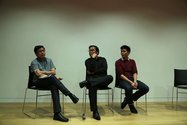

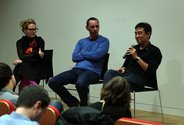
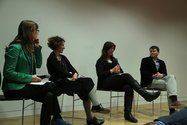
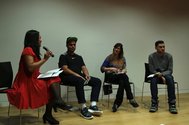
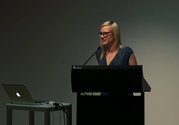
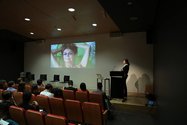

 Two Rooms presents a program of residencies and projects
Two Rooms presents a program of residencies and projects Advertising in this column
Advertising in this column



This Discussion has 0 comments.
Comment
Participate
Register to Participate.
Sign in
Sign in to an existing account.